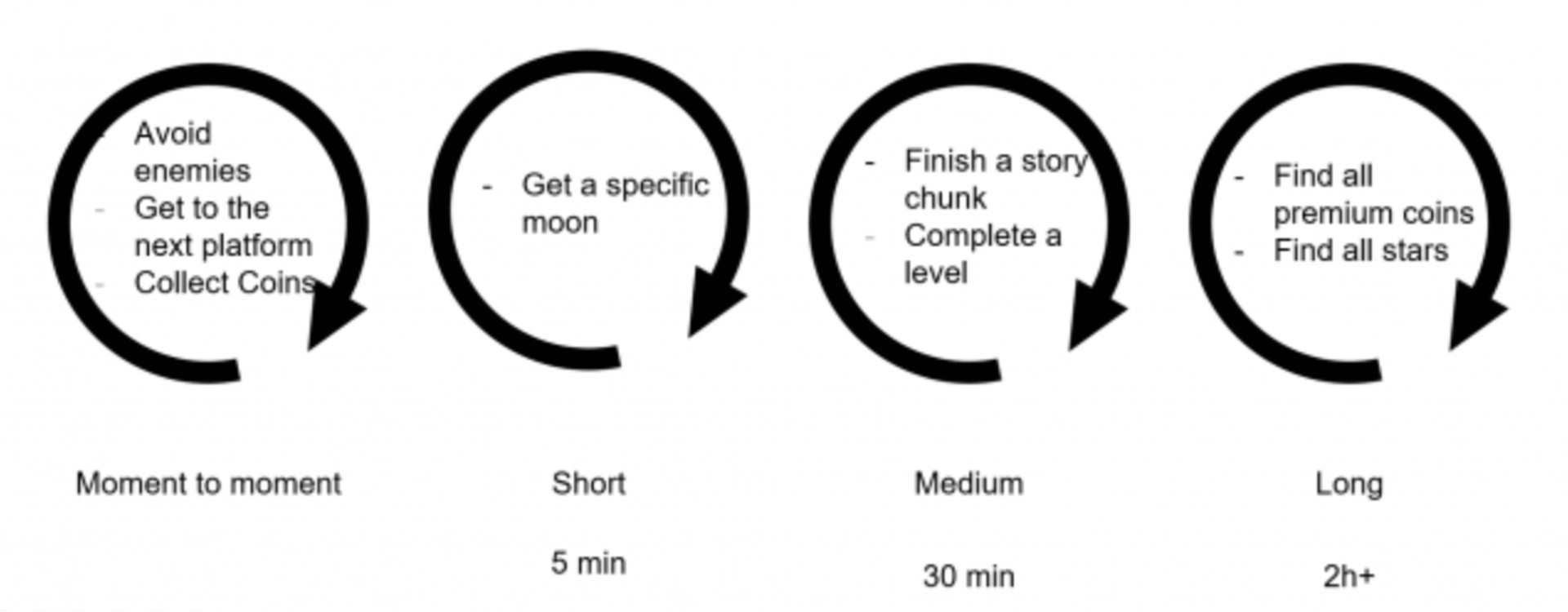Tools
Goal Loops
Plan out objectives from short term through long term to keep players engaged.
Goal loops define 3 to 5 levels of objectives in your game, based on the time required to complete them. Making your goal loops explicit will allow you to visualise more easily how various objectives fit together in your game.
WHY
This practice will help you ensure that goals are aligned and that the player always has a next objective to work towards.
HOW
Step 1: Draw 4 loops on a board or use the template.
Step 2: Write down 1 to 3 objectives that the player needs to achieve in your game, and place them inside each loop:
- Moment to moment
- Short term
- Medium term
- Long term
Step 3: Try and estimate the duration of each goal loop.
Step 4: Iterate on your loops. Maybe you need one less loop, or one more? Do you need to adjust the duration of each loop?
Tips:
- Not all game genres need to have four levels of goal loops. For example, an arcade game might not necessarily have a medium-term goal, only the long-term goal of getting a high score.
- For most other genres it is useful to identify a medium goal corresponding to the duration of a play session, which is about 30 minutes.
EXAMPLE
Goal Loops in Super Mario Odyssey
Source: Alexandre Mandryka, cited by Rafael Vazquez in: “5 Practical game design tools to help design your game”
FURTHER REFERENCES
The Art of Gameplay Loops: Keeping Players Engaged, by Game Design Knowledge
OCR Loops in game design, by Coline Pannier

